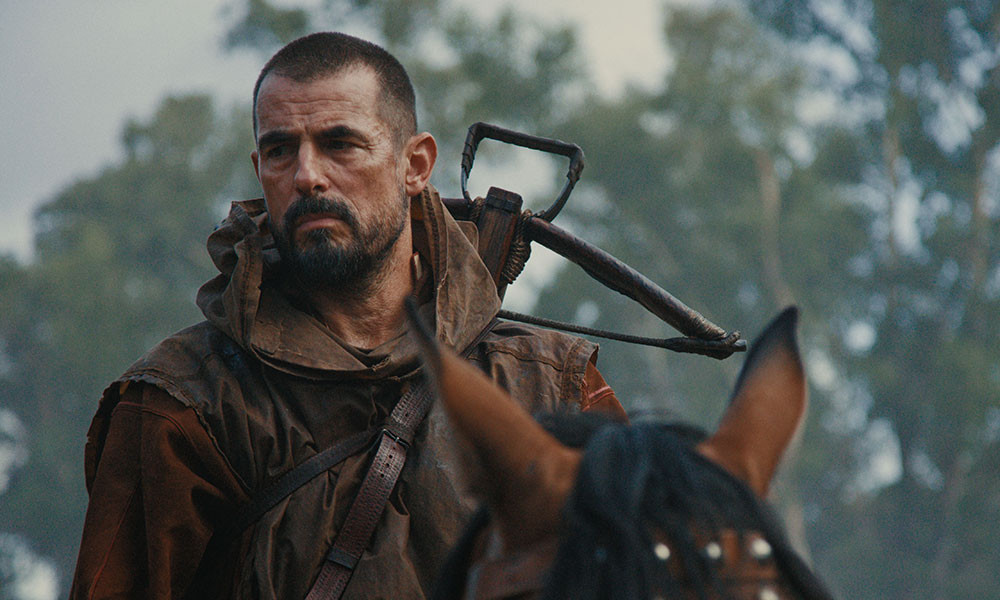
NICK HAMM'S ‘WILLIAM TELL' GIVES HISTORY'S MOST FAMOUS ARCHER THE ACTION PIC TREATMENT: ‘STUDIOS STOPPED MAKING THESE FILMS, AND I DON'T KNOW WHY'
Nick Hamm's "William Tell" is a throwback. It's a big-budget - roughly $45 million - action pic based on popular folklore and loaded with rousing action sequences, inspiring speeches from the frontlines and a glossy blend of digital and practical effects. It screens Sept. 10 at the Toronto International Film Festival.
Set in 1307, the film tells the story of famous Swiss hero William Tell, who - in this version - reluctantly leads a revolution against the oppressive Austrian king who occupies a stretch of land along the modern-day border between the countries. A former crusader, Tell would rather use his blade to till the fields than fight against oppression but is pushed to violence after being forced by the king's unscrupulous men to shoot an apple off his son's head from a seemingly impossible distance.
"I've always been fascinated by this story and wanted to know more about it," Hamm says of his desire to give Tell some screen time normally reserved for his English contemporary, Robin Hood. To learn more about the character, Hamm read Fredrick Schiller's 1804 play about Tell, which has been one of the only written versions of the saga for roughly 500 years.
"Yet, the fable has been used and abused as a cultural touchstone for centuries," the director points out. "For the Swiss, he's always been a hero. The French used him as a liberator figure during the revolution. Hitler loved William Tell and incorporated some of Shiller's language into his speeches, although they were burning his books by the end of WWII. So the character and the story have always fascinated and related to people, even though most didn't know much about him except that he shot an apple off someone's head."
Since his screenplay's primary source was an hours-long, 200-year-old play, Hamm was left with some heavy lifting to make the story palatable for modern audiences. In an unfortunate twist, geopolitical events aided in making Tell's story more relatable to modern audiences.
"As I was writing, all these wars started to happen, and Russia invaded Ukraine. Everything I was musing on became so pertinent," he recalls. "I thought to myself, ‘I'm basing this on a 500-year-old legend, and the stuff they're talking about is exactly what's coming across the bloody radio today."
While Hamm always saw Tell's story as an anti-war fable, he says his main objective was to make something fun that audiences would enjoy, and that could fill a gap he believes exists at the box office.
"Studios stopped making these films, and I don't know why," he says. "It's just a fun movie, and people like to have fun at the movies. Yes, there are some political connotations, but the goal was to entertain and create gripping characters and narratives."
In adapting the Tell story, Hamm had to invent nearly all the action himself. Before Hollywood-sized budgets and virtual effects, writers weren't as ambitious in detailing battlefield action scenes. He also dropped roughly 60% of the characters from Schiller's play and completely rewrote all the remaining women, adding a few more to create a more believable story.
"Shiller's women weren't at all useful given the way women were written 200 years ago. They were little more than scenery, and that didn't work for me," Hamm says.
One of the most significant differences between Schiller's and Hamm's versions is that the 1804 story essentially ends after Tell shoots the fabled apple off his son's head. Hamm, on the other hand, uses the iconic scene to launch into a revolutionary epic about Tell and a pieced-together Swiss army that sets up a potential sequel by the film's end.